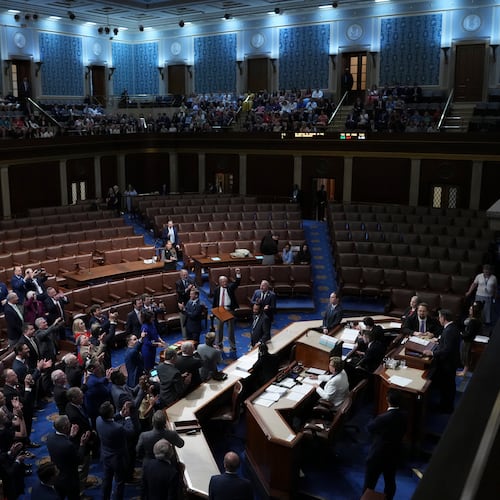Why would a journalist want to see crime scene photos of Meredith Emerson, whose body was found nude and beheaded? Is there some sick prurient interest here?
Actually, none whatsoever. I never thought about it that way. I don’t know of anybody who did.
I’m the author and reporter who made the open records request regarding the official record of Emerson’s homicide. The crime scene photos were a part of that request.
At the time, I had no idea what state her body was in. I was reporting a true-crime story for Hustler Magazine on Gary Michael Hilton, who killed Emerson and is the suspect in murders in Florida and North Carolina.
For a reporter doing his job, the crime scene photos are essential to the reporting. The idea is not only to understand what happened, but to piece together how it happened.
I use them to double-check if what the killer told police is true; to see if his M.O. fits in with the other crimes he’s charged with; and to see if there are similarities and/or differences compared to unsolved murders.
Hilton, for example, took off Emerson’s clothes because he is a serial killer who understands how forensic evidence can prove guilt. He didn’t want any evidence that could tie him to the crime. He hid everything. That’s what makes him particularly dangerous.
Transcripts of a confession are not enough, especially when the suspect is a self-admitted sociopath such as Hilton.
Hilton’s a liar. How else can I tell what happened without looking at the shots?
Crime scene photos also help reveal the why, or motive, of the crime.
For example, if a victim died from bludgeoning, crime scene pictures might show bruises on the decedent’s arms, indicating resistance. That’s important not only as to the victim’s character, but as to the force the killer used without feeling guilt about what he was doing.
In a capital murder case especially, police want more than a confession to get a conviction that can survive appeal. That’s why the forensic evidence gathered while the killer is giving his confession can trump the defendant’s appeal that the confession was coerced.
Crime scene evidence can also be used to tie murder suspects to other open cases in which his name has appeared as a suspect. This is especially true for Hilton, who will stand trial in September for the brutal murder of Cheryl Dunlap in Florida in early December 2007.
When news of Emerson’s murder reached Florida in January 2008, authorities there knew Georgia had their suspect and they extradited him. Florida is trying Hilton on murder charges with death by lethal injection or electrocution a possible outcome.
In an effort to get a conviction, the state will almost certainly introduce photographs of Dunlap’s body in open court. Florida judges often allow the evidence in criminal trials to be photographed and handled by the public.
If the Florida jury goes into the penalty phase after a conviction, the state can and will bring in evidence of Hilton’s previous crimes to get the jury to sentence him to death. That evidence can include crime scene photos from previous crimes.
After his Florida trial, Hilton will be transported to North Carolina to stand trial for killing Irene and John Bryant. Authorities in Transylvania County, where Irene Bryant was killed, are hopeful that the North Carolina federal attorney who now has jurisdiction in the case will cede it back to the state, which could then try Hilton for murder, once again with the death penalty on the table.
Before that happens, Hilton will continue to be investigated by law officers throughout the South who believe he committed more than these four murders.
When I submitted my request for photos to the Georgia Bureau of Investigation, I read the Georgia Open Records Act to see what I could and could not ask for under Georgia law. I didn’t see anything that excluded crime scene photographs.
I’ve written books about homicides in many states, including Florida, Michigan, California, Louisiana, Kansas, Ohio, Pennsylvania and New York. Until this case, I have never been denied crime scene photographs by the police and/or state.
As for the disposition of crime scene photos I might have been given, it’s the publisher’s decision what to publish, not mine. Regarding what Hustler may or may not have published, my editor was ready to change my request to simply ask for any crime scene photographs, and would have been satisfied with images of yellow crime-scene tape or tire tracks.
Subsequent legal action made this a moot point before the request could be entered.
Fred Rosen, a writer and historian, is the author of many true crime books including “Deadly Angel” and “Lobster Boy.” His book “The Historical Atlas of American Crime” won Library Journal’s “Best Reference Source of the Year.”
About the Author
Keep Reading
The Latest
Featured


